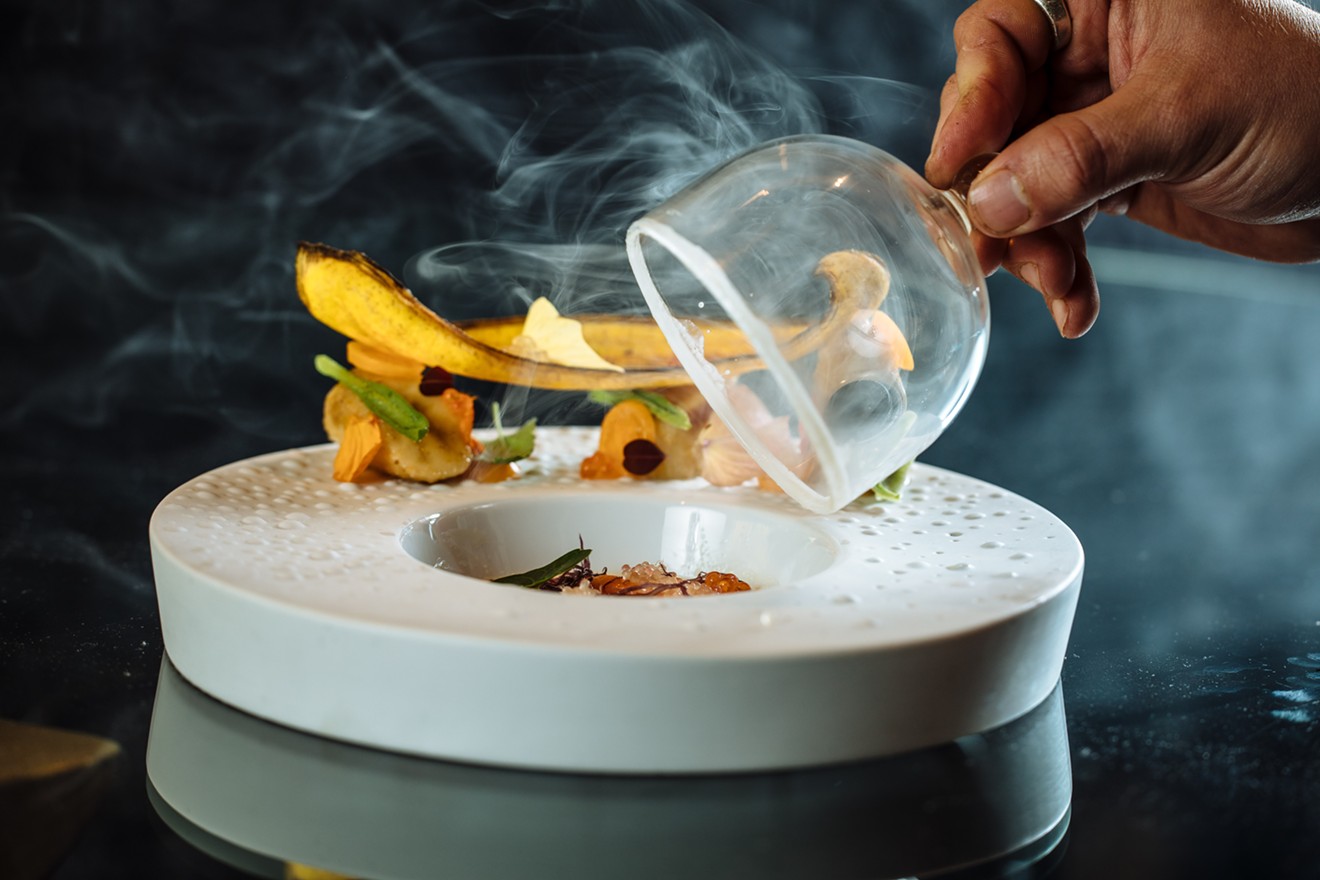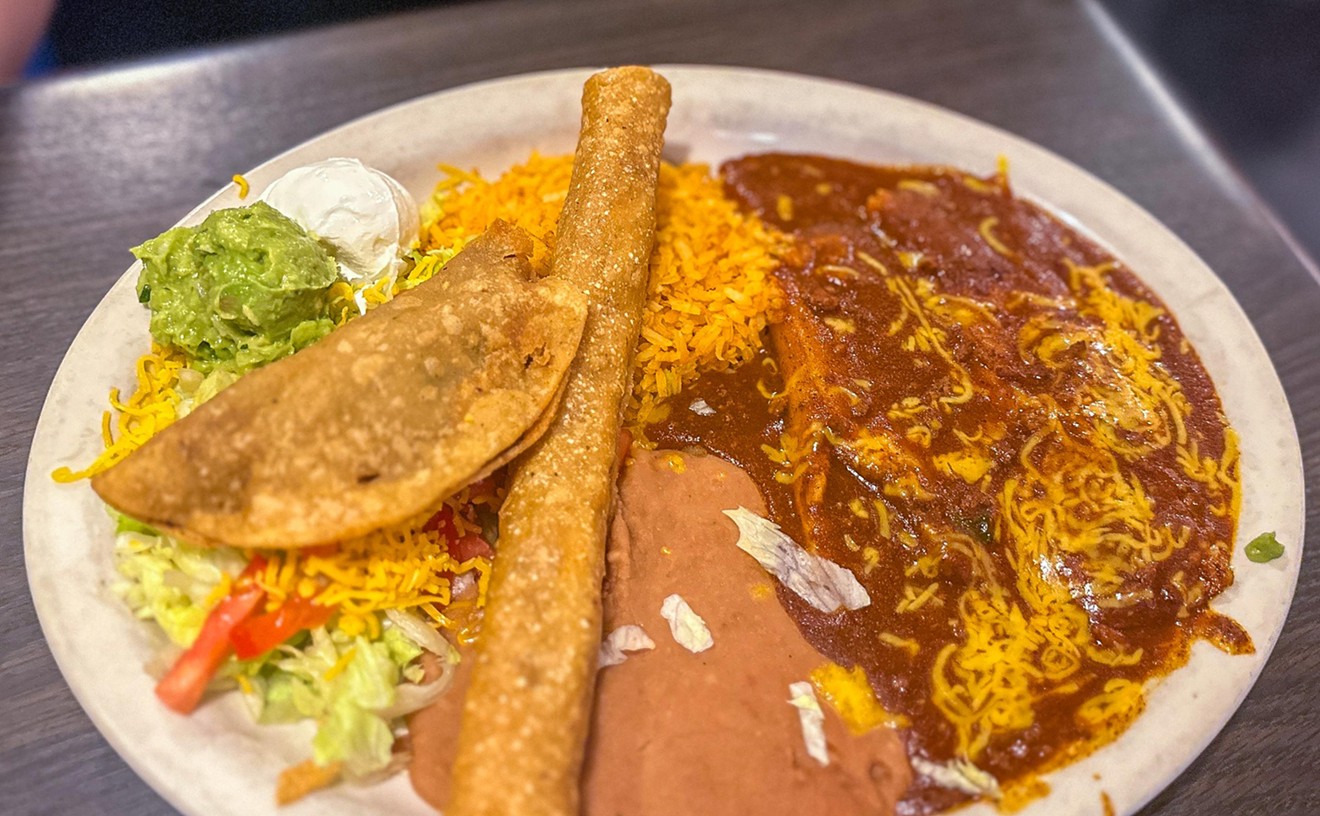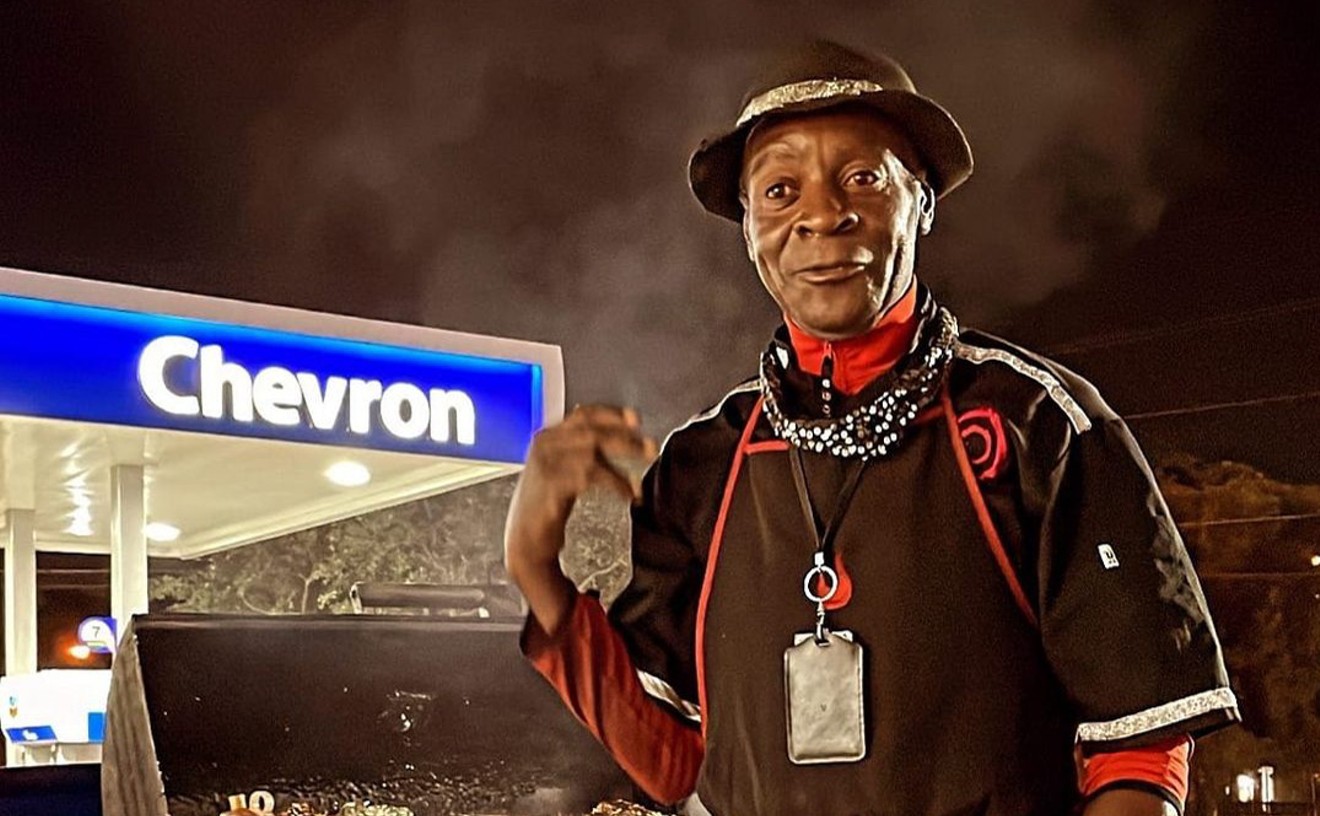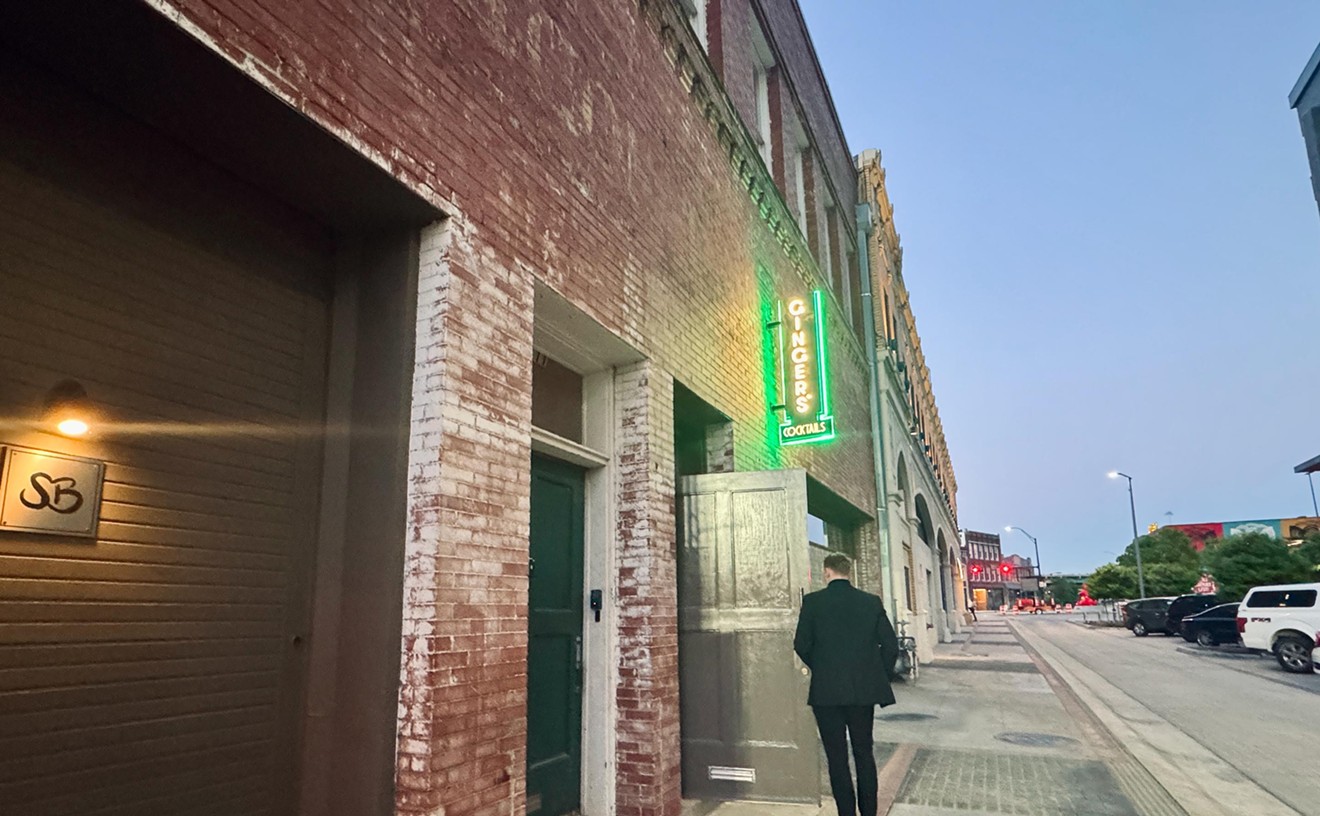Food has always been a part of the Dallas myth, but as new neighborhoods ascend to prominence and a new generation of leaders prepares to supplant the old-money barons, a similar revolution is underway in the city’s culinary scene. Dining out in Dallas isn’t just about rare beef anymore.
After the hedonistic rush of Southwestern cuisine, with its stuffed chops and cowboy rib-eyes, a generation of young chefs is introducing a set of less flashy principles: creativity in more casual settings, smaller dining rooms, radical reliance on local farming and foraging, heavy use of preserved or fermented foods, and an embrace of the city’s immigrant diversity.
Not every rising chef embodies all of those principles at once, of course. But Matt McCallister, Misti Norris, Regino Rojas, Angela Hernandez, Josh Harmon, Fino Rodriguez and Peter Barlow — none of them are over 40, many not yet 30 — are among chefs and restaurateurs who are helping to build a new idea of Dallas cuisine.
***
To understand where we’re going, it helps to know where we’ve been. Today’s young chefs must contend with the legacy of Dallas’ previous culinary revolution, the Southwestern cooking movement of the 1980s. Dean Fearing, Stephan Pyles, Avner Samuel, Anne Greer and Houston chef Robert Del Grande transformed fine dining in Texas by promoting new dishes combining the best of Mexican, New Mexican and Texan traditions. Even outside of restaurants, their advocacy helped establish ingredients like poblano peppers and cilantro in non-Hispanic groceries and pantries across the country.
“In the greater sense of whatever American cuisine is today,” Pyles says, “our lasting influence and direction there was to bring spice — kind of that big, bold flavor with chiles and smoke and lots of citric and herbaceous flavors. I think we woke America up to flavor.”
If Southwestern food isn’t the iconic Dallas style anymore, that’s because the trend went mainstream. Nationwide, the movement was reduced to tobacco onions, chipotle mayo and just about anything on which a caterer could sprinkle corn kernels and black beans. To many fans, the most enduring Dallas restaurant to come out of the Southwestern revolution was a casual spot founded at the corner of Greenville Avenue and Meadow Road: Chili’s.
Pyles, Fearing and their generation still cast long shadows over the city's food scene. Restaurateur Nick Badovinus, creator of Neighborhood Services and Town Hearth, preserves the big-hearted Fearing steakhouse spirit and enjoys packed dining rooms. Pyles alumni Kate Weiser and Katherine Clapner helped give the city a booming chocolate market. But the Southwestern moment is evolving.
“There was a period of time,” Pyles says, “when people were asking, what’s to become of Southwestern cuisine? What’s the next generation? It seemed that they were all moving away from it and doing anything but chiles and masa. It was Asian-infused or Mediterranean. It didn’t look Texan or Southwestern.

“We’re not Japanese, we’re not modern, we’re not Southwestern,” Barlow says of Flora Street Cafe.
Kathy Tran
Nowhere is the changing of the guard more obvious than at Pyles’ newest fine-dining landmark, Flora Street Cafe, where he passes the baton to a new group of young stars led by Barlow, whom he brought in from Tennessee. Barlow, whom Pyles calls “brilliant” and “one of the best I’ve had,” has considerable free rein to invent new twists on the older chef’s personal style.
“We’re creating a new cuisine,” Barlow says, somehow managing to sound modest. “We’re not Japanese, we’re not modern, we’re not Southwestern.” The goal at Flora Street is to be something entirely new. “We wanted to go ultra high-end, but we wanted to use food for the soul. We wanted to use heirloom beans, tamales.”
The experiment is going well enough that a Flora Street cookbook is in early planning stages, with the chefs drafting an outline and consulting literary agents. Pyles says the book will not be a restaurant souvenir so much as a study of “elevated Texas cuisine — the different influences and cultures that exist in Texas cooking, but taken to a new height.”
Talk to anyone at Flora Street long enough, and you'll hear about a former Pyles prep cook: McCallister, chef-owner of FT33 and de facto leader of the new generation of Dallas chefs. FT33 has been open for five years, and the full effects of McCallister’s vision are just now being seen as cooks he mentored branch out to lead their own kitchens. Norris, formerly of Small Brewpub and now a pop-up sensation; Harmon, of Junction Craft Kitchen; Josh Sutcliff, at Mirador; and Nilton Borges, in charge of dining at the Joule Hotel all have cooked at FT33. Bullion, downtown’s new French fixture, employs a few alumni as well. Barlow enlisted McCallister’s help in learning about Texas crops and growing seasons.
Early this year, FT33 began moving toward total reliance on local, in-season ingredients. Almost everything the restaurant serves is sourced from Texas or just across a state line, or comes from the kitchen’s stash of preserves, pickles and other aging experiments.
“The more and more I get into cooking, I guess it gets harder and harder for me to look at doing what we do any other way," McCallister says.
The extreme local focus is, in part, a moral choice to support local growers, promote North Texas agriculture and reduce waste. But McCallister says it’s a personal choice, too.
“I wanted to find out, can I cook as good with this constraint as I could without this constraint? And I think I can get pretty damn close," he says. "But man, I miss having an anchovy I can fold into a sauce, or an Italian Parmesan.”
In the cooking of his proteges, we see common threads. Norris, Harmon, Barlow and McCallister share a passion for pickling, curing and fermenting to achieve improbable new flavor combinations and to circumvent practical difficulties. (Harmon’s restaurant doesn’t have a walk-in cooler or a freezer.) All build relationships with local farmers.
These chefs oversee menus that change to reflect the freshest local produce of the moment, or in many cases what they’ve personally foraged in Dallas or the surrounding countryside. At Junction, the menu gets an overhaul every few months. At Flora Street Cafe, new menu items are added one at a time almost every week, and, Barlow says, “the tasting menu is always revolving.”

“The more and more I get into cooking, I guess it gets harder and harder for me to look at doing what we do any other way," McCallister says.
Kathy Tran
“We are the opposite of the fancy, glitzy, see-and-be-seen restaurant," McCallister says of his dining room.
These chefs also embrace smaller audiences than their predecessors.
“I believe in the really small restaurant,” McCallister says. “You can push a little harder with your own creativity, and you don’t have to worry about all these variables that could hit you. I would like to see more small restaurants opening — 40 seats. I love what they’re doing at Mot Hai Ba, and that’s tiny.”
The most extreme example is Revolver Taco Lounge’s fine-dining tasting menu, which sometimes serves just two customers per night. Rojas, the owner, says that intimate atmosphere is by design.
“I want people to have that experience that I normally have, an experience that I’ve lived before in Mexico with my family. The full experience, not just the food. I want you to walk out of there with a different state of mind toward Mexican food. We try to do the full circle. It’s hard to do that with 1,000 people at a time. You become a machine. To make those numbers, you have to be a machine.”
His full-circle philosophy is about the idea that great food is not all a restaurant needs.
“When you eat and you see a menu and order caldo de pollo, and it’s traditional caldo de pollo, but the place is cold, the place is generic, the place is corporate — it doesn’t lead you full circle," he says. "But if that atmosphere makes you feel like you’re at home, makes you feel like you’re near your mother, that one second you feel like you’re family there, at that one specific moment, that fulfills the circle.

Regino Rojas, owner of Revolver Taco Lounge in Deep Ellum, is redefining the ambition of the Dallas taco shop.
Kathy Tran
Smaller restaurants can close the circle, but they also benefit from pure economics.
“Rent is getting a little more expensive, so it’s difficult to get where you achieve certain goals when you open," McCallister says. "You know you gotta make rent, so how far are you going to push the boundary on something?”
Norris agrees.
“If I’m at a smaller scale, there’s less risk," she says. "It’s a really good platform to put all your creativity into to see how it goes and how people respond.”
Her next dining room, she hopes, will seat no more than 42. Norris is working to open a new pop-up “charcuterie and noodles” shop, expected to run for several months in East Dallas, in early 2018.
Another solution — the pop-up dinner — is on the rise, too. Sandwich Hag, Reyna Duong’s banh mi shop in the Cedars, debuted as a series of pop-up meals. At least one Dallas chef, Joshua Gianni Ferrell, now works pop-ups full time. He organized the group Nameless Chefs.
“Business has been great,” Ferrell says. “Chefs and cooks alike want to test out their ideas, get out of their confines of their everyday work. Dallas diners want to come out and play, see and taste something new, support their local creatives and be a part of something that could only be experienced for one night only.”
So here is the model for the new Dallas fine dining: Wear jeans, eat with the seasons, go to pop-up dinners, embrace funky flavors, support local farmers, dine in small rooms, enjoy pickles. But there’s a much bigger change happening to the city’s food scene. That change is less about the people who make food in Dallas and more about the people who eat it.
***
Over the past few decades, Dallas' demographics have changed dramatically. Different neighborhoods are growing and stagnating. Diners and, to a lesser degree, food writers have changed their attitudes.
In 1980, Dallas County was 70 percent non-Hispanic white and just under 10 percent Hispanic; by 2015, those numbers had changed to, respectively, 28 percent and 42 percent. The county’s African-American population grew as well, and a recent Census Bureau estimate says almost a quarter of Dallas residents hail from outside the United States.
Perhaps no fact more powerfully explains the shift in Dallas dining since the Southwestern era than the arrival of newcomers who have roots in other countries. A wave of immigrant or first-generation talent has taken over our food scene: Teiichi Sakurai at Tei-An and Ten, Masayuki Otaka at Teppo, Peja Krstic at Mot Hai Ba, Uno Immanivong at Chino Chinatown, Mansour Gorji at Canary, Salah Hassan at Chai Khanah and Albaghdady Bakery, Lucy Yong at Fortune House, Reyna Duong of Sandwich Hag, Julien Eelsen at Whisk Crepes, Prem Damodaran and Sheik Dawood at Kumar’s, Eliseo Figueroa at Lima Taverna, Nimidu Senaratne and Chamari Walliwalagedara at SpicyZest, Khanh Nguyen at DaLat and ZaLat, Afifa Nayeb at Laili and 8 Cloves.
And that list doesn’t even mention two of Dallas’ biggest immigrant groups: Mexican-Americans and Korean-Americans.
South of the Trinity River, Jesus Carmona and Moises Rico plate spectacular seafood tacos with modern touches at Tacos Mariachi, Fino Rodriguez serves ceviche and Brussels sprouts from a tiny kitchen at Taquero, Luis Olvera attracts national attention at Trompo, and Honorio Garcia and his team present squash blossom quesadillas and grasshopper memelitas at Mi Lindo Oaxaca. North of the Trinity, El Palote pioneers the all-vegan taqueria and Rojas uses Revolver Taco Lounge to redefine the ambition of the Dallas taco shop, including a tasting menu with such spectacular dishes as medium-rare duck breast with homemade mole or a pillow of poached lobster folded into one of the city’s freshest corn tortillas.
Meanwhile, Korean-Americans are busy seducing the rest of town. Young entrepreneurs are gaining followings, like Grace Koo at 9 Rabbits Bakery and Boba House, Joon Choe of FreshFin Poké, or the brothers Ben and Jon Lee, who founded the popular chain LA Burger when they were just 25 and 23 years old. This news is especially heartening because of the cultural hurdles that young Korean-Americans often face in the restaurant business.
As Ben Lee told the Observer in 2016, “a lot of Asian people at a young age are told that they can only be doctors, lawyers, engineers, architects, so they are kind of shied away from going that entrepreneurial route because typically that’s where the parents are from — dry cleaners, doughnut shops. They don’t want their kids to go that route. So we are kind of opening up that path for newer generations.” The Lees are part of a professional network that encourages new businesses by likeminded Asian-American entrepreneurs.

Chef Josh Harmon uses Junction Craft Kitchen as a chance to add Korean spices and techniques to American Southern food.
Kathy Tran
Those demographic changes ripple through almost every kitchen in town.
“Dallas has changed in terms of what we’re allowed to put on our menu,” Harmon says. “When I was at Grace [in Fort Worth from 2012-13], we would put on specials — he [chef Blaine Staniford] put on beef cheek, and we would call it pot roast. I wondered why, and one day I asked him, and he said it’s the only way we can sell that dish. You can get away with that stuff now. You can put beef cheek on your menu. You can say gochujang instead of Korean chili paste.”
Dallas diners haven’t been cured of every bad habit. The “Fickle 500” — a notorious group of foodies for whom new restaurants with polished PR campaigns are catnip — are still in force.
“Dallas gets really excited,” Norris explains. “When there’s a new concept, when there’s a new restaurant, when your favorite chef is doing something new, you get very excited.” The problem, she says, is “the longevity of that excitement. Dallas’ attention span is very short. That’s one of my biggest fears.”
Ask a Mexican-American restaurateur, meanwhile, and you might get an earful about how non-Hispanic Dallas still demands nachos and queso. One restaurant owner, speaking anonymously, suggests that there is still a “40 percent” rule — a Mexican menu must contain at least 40 percent Tex-Mex for diners afraid to leave their comfort zones. Jalisco Norte, a new Mexican restaurant with a chef who trained under Enrique Olvera, acknowledges that fear with a menu section called “Los Familiares,” which includes nachos.
Rojas suggests that the problem is the scale of many of these restaurants.
“These are big investments, and it’s understandable if you drop $1.5 million on a restaurant. Shit, you don’t want to lose too much money,” Rojas says. At a smaller scale, he says, great Mexican cooking can pay the rent. “The mentality of chefs is changing, and that is slowly changing the mentality of the people that put up the money. And that is a slow process — the people that put up the money still fuck it up — but the audience is there.”

Chef Misti Norris is opening a pop-up charcuterie and noodle shop in East Dallas in 2018.
Kathy Tran
Brenner arrived at the Morning News in 2009, and her influence became titanic. In part, that was because of her occasional wars with chefs and fellow food writers, but her influence also grew as Brenner took a prescriptive, rather than descriptive, approach to the city’s food scene, offering tough-love suggestions meant to help Dallas mimic culinary riches found elsewhere. Early on, she smartly advised chefs to use more local produce. But she also wrote dismissively of the city’s Mexican food, left its Korean population largely uncovered and occasionally landed in hot water for inaccurate reporting on other nations’ cuisines.
This summer, Brenner left for a job in the restaurant business. The Morning News now has an opportunity to hire a food critic who can recognize the city’s evolving demographics, venture outside trendy neighborhoods, critique the powerful role investors play in kitchens, nurture the attention spans of the Fickle 500 and encourage Dallas cuisine to grow on its own terms.
***
Dallas restaurants face daunting challenges. As was the case before the economic collapse of 2008, the city’s food scene is in a bubble, with too many generic middlebrow offerings boasting identical menus of pork belly, deviled eggs and brunch Benedicts. Worryingly, rising income inequality is bringing a new bubble of restaurants unapologetically exclusive to the wealthy. Mirador, with its downtown penthouse perch and four stars from Leslie Brenner, recently began serving $24 scrambled eggs.Together, these trends produce risks of bloat and of an unequal scene in which 1-percenters dine at one class of restaurant while the rest of us live off tortas and pho. That’s not a bad deal for diners who prefer tortas and pho, but important reasons exist to fight for a middle ground. Extreme inequality keeps those outside the fine-dining system from breaking in. The hard workers who prepare $1.29 tacos deserve the opportunity to earn higher wages for their labor. A healthy middle class of restaurants is the best way for cooks and their families to enter the middle class themselves.
Additionally, the sort of creativity that diners crave costs money. Innovation, menu development and locally sourced ingredients don't come free. But if the city’s best culinary minds segregate themselves into a class of restaurants where a weeknight dinner with drinks costs $120, what incentive will there be to bring that same energy to a meal that costs only $40?
Barlow, at Flora Street Cafe, worries about labor. He mentions Legacy Hall, a new food hall in Plano that is trying to defy a difficult labor market.
“How do you open these 40 restaurants? Where do these cooks come from? Where are these dishwashers coming from? Where are these managers coming from? A lot of young cooks are biting off more than they can chew, and it bites them in the ass, and there’s a lot of financial burden that comes with that," Barlow says. If a young chef’s first venture fails, that failure lingers on his or her resume for years.
Barlow’s boss shares that concern.
“It excites me that there are restaurants opening a lot,” Pyles says, “and it concerns me that they’re opening a lot. It becomes so competitive, not just for diners but for labor. I’ve never seen it, in 30 years in the restaurant business, such a challenge to find cooks and waiters. And when you do find them, they’re stolen for the next new restaurant.”
But Barlow and the other chefs of his generation see hope for Dallas, too. Compared with New York, Barlow says, “there are so many things to help people who are willing to work their way up and climb. Here, there’s opportunity.”
As McCallister, Harmon, Norris, Rojas, the Nameless Chefs and even new-wave taco shops like Taquero demonstrate, small dining rooms and pop-up meals are offering economically viable spaces for innovation.
“I think that there’s room in Dallas for people to push the boundaries more,” McCallister says. “I don’t mean like Alinea shit — there’s more room for just cool stuff, whatever you’re influenced by.” (Alinea is a three-Michelin-star Chicago monument to modernist cuisine. Its meals cost a small fortune.)
Slowly but surely, Dallas diners are getting ready for the young generation. They’re more diverse, more globally minded and more inclined to try something new. And the city’s rising chefs are ready to reward those diners’ adventurousness.
Pyles sees these developments as a fresh turn in the long evolution of Dallas culture. He says he has begun telling friends, “We’re finally becoming the city we always thought we were.”
The new chefs are a little more modest.
“I’m not saying we’re going to do anything to change the culture,” Harmon says. “But we’re going to show up.”

















